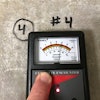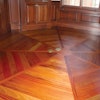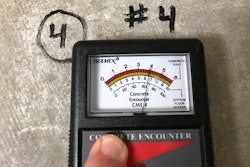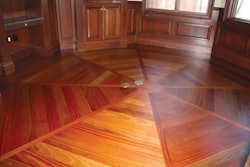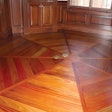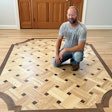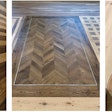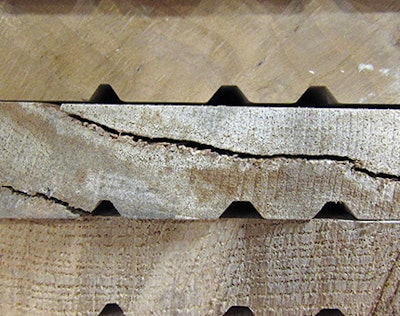
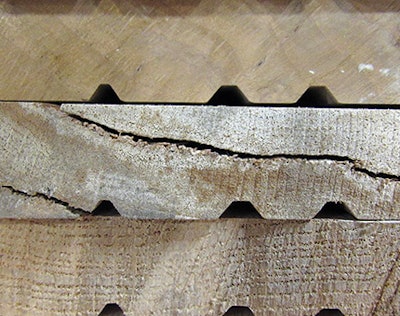 What is going through that middle board? What are the grooves on the bottom for? Many pros in our industry don't seem to know.
What is going through that middle board? What are the grooves on the bottom for? Many pros in our industry don't seem to know.
Several years ago while standing in the office of a flooring installer, I overheard him in a phone conversation with a homeowner interested in having a character-grade floor installed in her home. He described No. 2 common flooring as "dirty." Imagine the look on that homeowner's face as she thought about what would be an $8,000–$10,000 investment. When the contractor got off the phone, I asked if he sold many character-grade floors. His answer didn't surprise me: "We never install character floors in this area."
Of course, it wasn't the area that limited his sales of character-grade flooring. The terminology you use influences your closing rate. Had this contractor discussed attributes with descriptions such as "natural characteristics of the lumber," "a look that emulates a mountain lodge" or "a product that truly reflects nature," he may have been installing something other than select-and-better once in a while.
The impact of the correct terms
Having an understanding of the marketable descriptions of the products you sell has a dramatic impact on the ability of the consumer to understand what they are shopping for. Additionally, knowing the correct terminology helps create clarity when describing a problem during or after installation.
Consider how seriously a manufacturer will take a complaint if the contractor doesn't understand the terminology of the products or how they relate to the issue. Having that professional vocabulary brings legitimacy to your position and assists in getting resolution to an issue more quickly.
The further you are removed from manufacturing, the more likely it is you'll misunderstand the technical terminology. Can you accurately describe the difference in plainsawn, riftsawn and quartersawn? The different grades for solid flooring? The proprietary grades for the different manufacturers you sell? Can you describe the manufacturing process from log to lumber to flooring? What happens in a kiln?
Common misunderstandings
There are some common misunderstandings and myths we come across. Just one example of a poorly understood process in manufacturing revolves around the steaming process in walnut lumber. Did you know freshly sawn walnut is greenish-brown with nearly white sapwood? If walnut is not steamed, it has deep chocolate heartwood and white sapwood after kiln drying. The contrast can be stark, and if heavy heartwood is desired, the removal of the sapwood can be costly. Because of this, manufacturers place green lumber in specially designed chambers and force steam through water troughs in the floors; the oxidation darkens the wood and typically takes three to four days. It allows a greater utilization of the resource and keeps costs down by improving yields.
RELATED: Understand the Different Flooring Cuts for Better Jobs
We also find many people have misperceptions about the technical terminology of the individual components of hardwood flooring beyond the basics like the tongue and the groove. Here are just a few examples of terms we find are commonly misunderstood.
Hollow-back: The hollow-back refers to the grooves in the bottom of hardwood flooring. If you Google their purpose, the answers can be entertaining (and somewhat frightening). Some believe these grooves are for "air flow"—but consider exactly how the air would get to that part of the floor once it is nailed to a subfloor and trim is placed. If you have been told the story that the grooves are there to prevent cupping, then consider: Have you never noticed cupped floors during a humid stretch of weather in spite of these mysterious grooves? The hollow-back is milled into the back face of hardwood flooring to reduce weight, thereby increasing the square footage per truckload, reducing freight costs.
Lower-groove shoulder: This is the machined portion on the bottom of the side-match and end-match groove. On the side match, this critical component ensures flooring stays in place once nailed. It engages between the bottom of the tongue and the top of the subfloor once nailed; this critical engagement point prevents vertical movement of individual floor boards and creates a mechanically sound floor.
Wind shake: This is a crack or separation between growth rings in timber (it is shown in the photo at the top of this article). It can occur as the result of timber being strained in high winds or felled in a manner that shocks the trunk on impact with the ground. Shake can be very difficult for flooring mill inspectors to detect and frequently is not identified until the floor is sanded and receiving its first coat of finish.
My father offered sound advice to me when I was a young man entering the lumber industry 25 years ago: "It is important to be well-read in the factors that impact your industry." If you are unable to locate the information you need, your manufacturer or distributor is happy to help, and most manufacturers are also willing to host you for a mill tour.
Having accurate information and a solid understanding of the terminology in the industry will help you sell more floors and solve problems quickly. Remember the words of Albert Einstein, "If you can't explain it simply, you don't understand it well enough."













